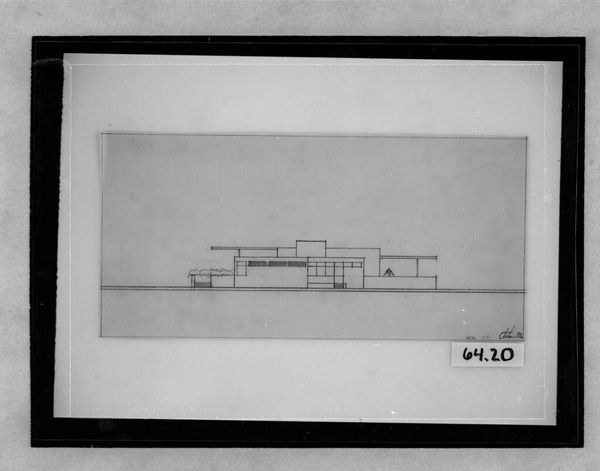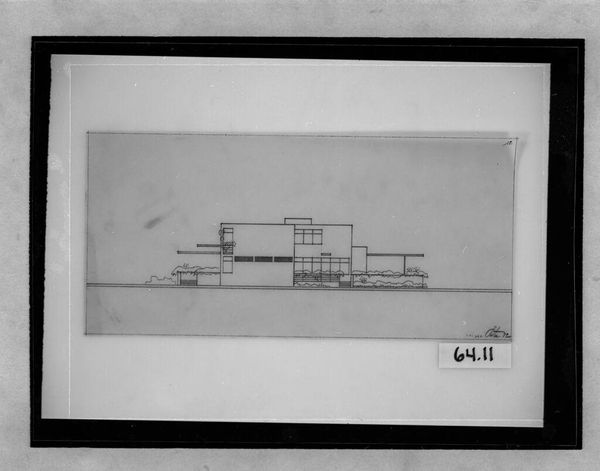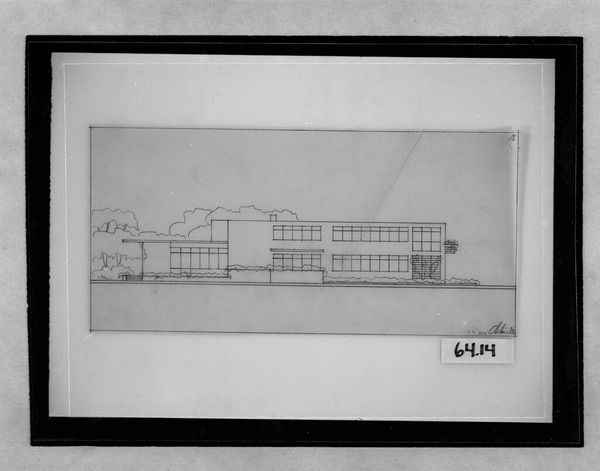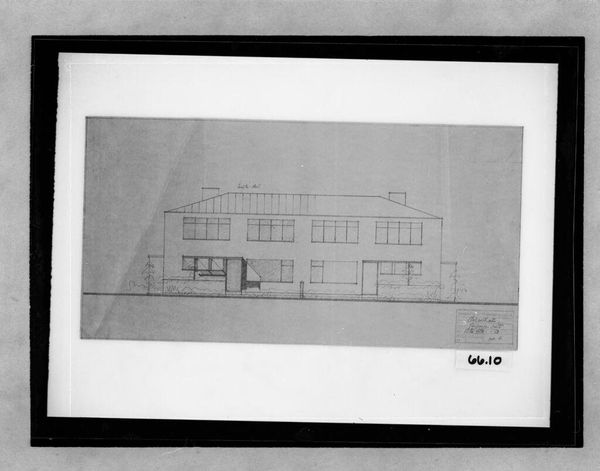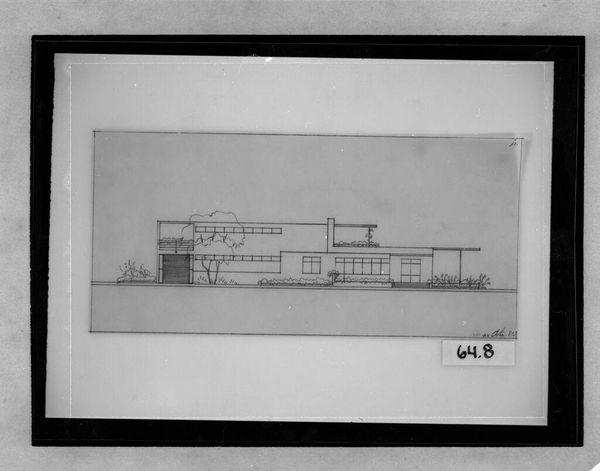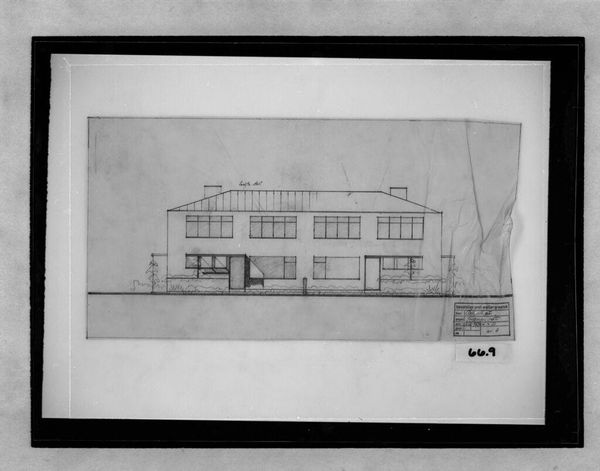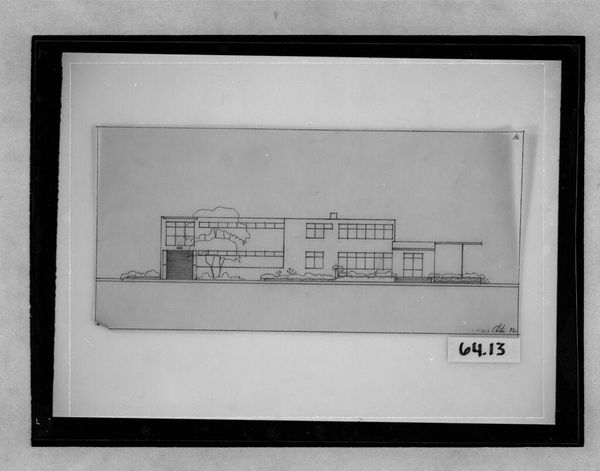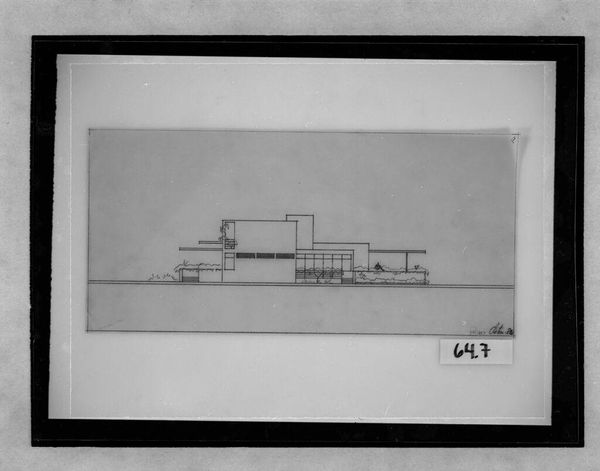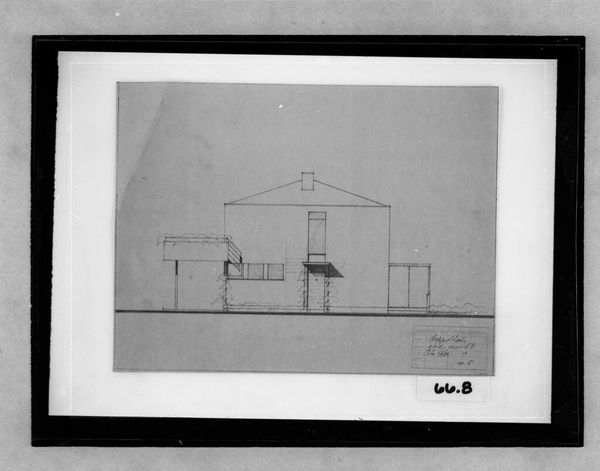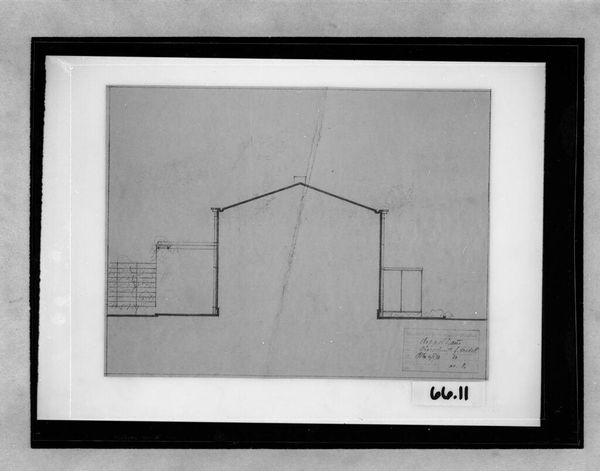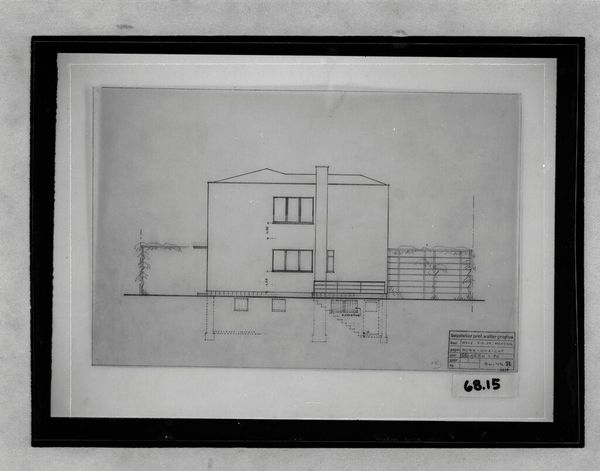
Dimensions: 21.5 x 45 cm (8 7/16 x 17 11/16 in.)
Copyright: CC0 1.0
Curator: Here we have Hanns Dustmann's "Villa, 1932-1933: Elevation," a striking architectural drawing. Editor: It's austere. That long horizontal line, those severe right angles—it's like a Mondrian escaped onto a landscape. Curator: And indicative of the era, wouldn't you say? The Bauhaus influence is undeniable. This represents a shift in architectural values, moving towards functionalism and social reform. Editor: Absolutely. The emphasis on clean lines and minimal ornamentation highlights the inherent geometry. It's a study in the balance of forms and the play of light across surfaces, though the original tones are only suggested here. Curator: Dustmann was working within a politically charged environment. This villa, even as a drawing, signifies a desire for a new social order, manifested in the built environment. Editor: Yes, and looking at the composition, it's clear how the interplay between horizontal and vertical elements creates a dynamic tension. The glass facade almost dissolving the barrier between interior and exterior space. Curator: It speaks to a utopian vision, doesn't it? Architecture as a tool for societal change. Editor: Precisely. Though, taken on its own, it's fascinating how the architect uses line and space to create depth and evoke a sense of modern living. Curator: Indeed. A reminder that even architectural drawings can hold multiple layers of meaning. Editor: A compelling interplay between social vision and formal elegance.
Comments
No comments
Be the first to comment and join the conversation on the ultimate creative platform.
